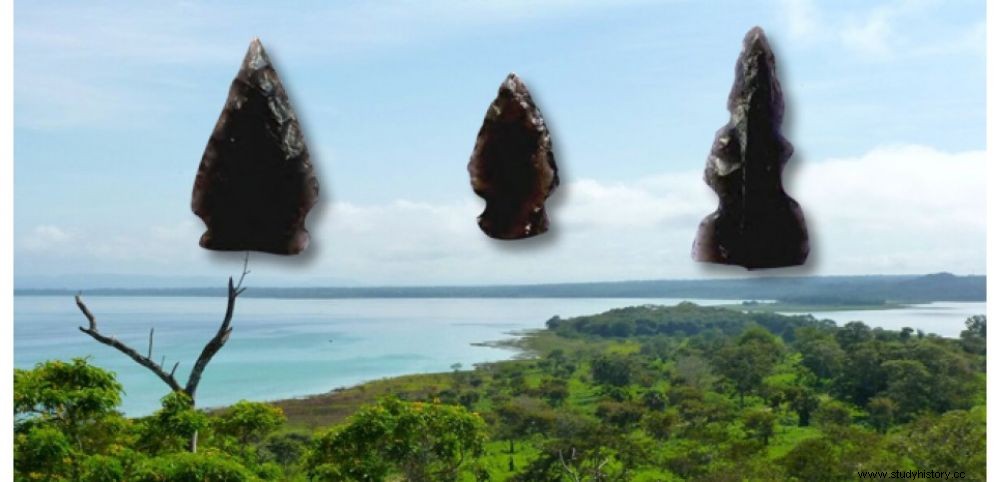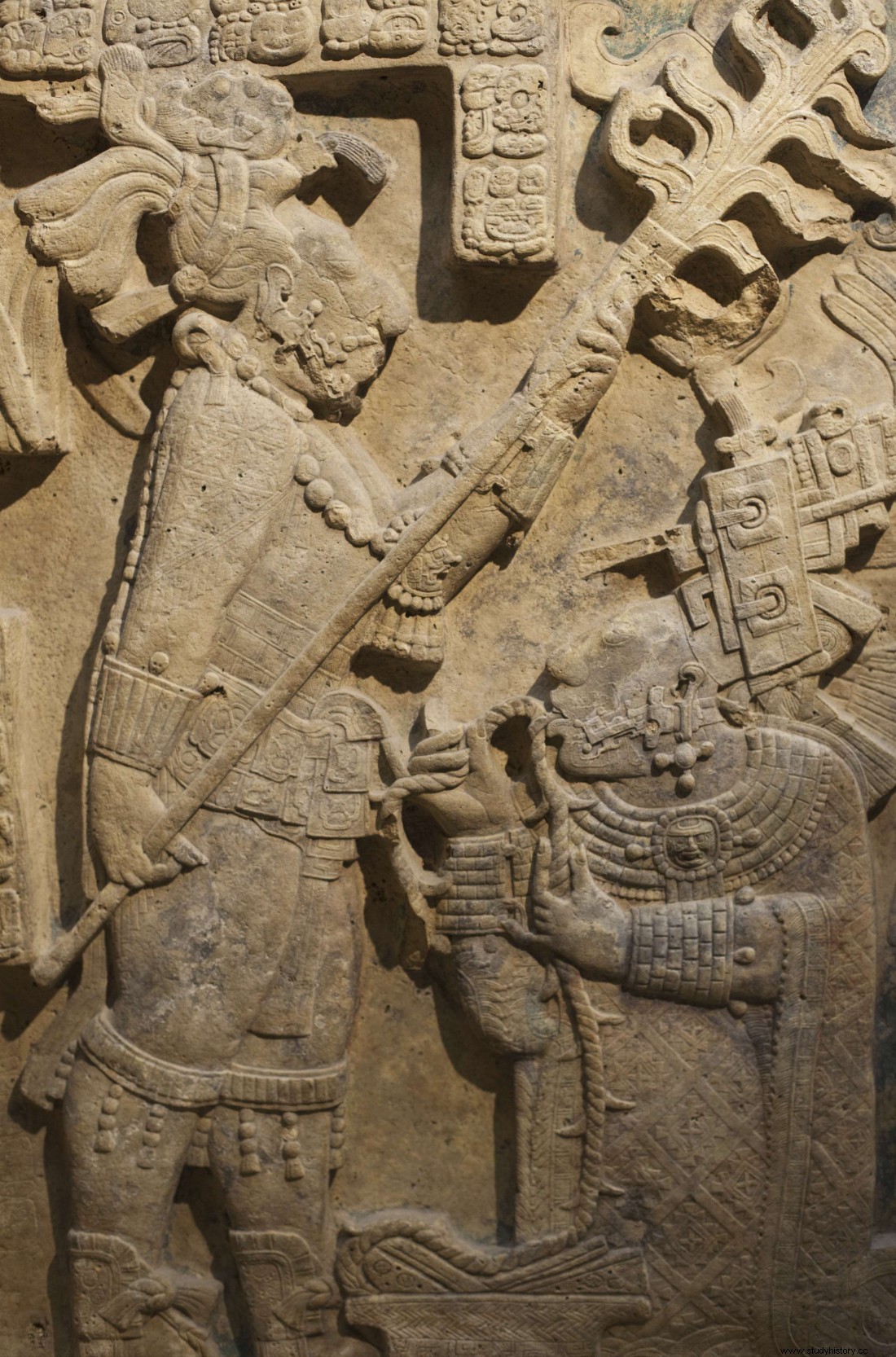 Obsidian Maya arrowheads found at archaeological sites in Peten, Guatemala. In the background, the Nixtun-Ch'ich peninsula.
Obsidian Maya arrowheads found at archaeological sites in Peten, Guatemala. In the background, the Nixtun-Ch'ich peninsula. SELF-SACRIFICE. Very rare traces of human blood on two arrowheads in obsidian (volcanic glass)… this is what archaeologists found among one hundred and eight projectile points collected from five Mayan sites* in the lakes region, in the department of Péten, north of Guatemala. One of them could have been used for the practice of the sacred ritual of self-sacrifice (read below) according to Prudence Rice, professor emeritus, and Nathan Meissner of the Center for Archaeological Research at the University of Southern Illinois (USA), authors of this work published in the Journal of Archaeological Science. These voluntary bleedings were carried out on the fingers, the lobes of the ear, the tongue… or the genitals. They were for the Mayans the most precious blood offered to the gods for almost 2000 years! As for the second point, it was discovered inside a house. The study of the set of obsidian arrows dated from 1400 to 1697 years of our era also made it possible to identify residues of animal blood on twenty-five of them via protein analyzes by immuno-electrophoresis. In particular those of rodents, birds, rabbits but also big cats, animals with strong symbolic power in the Mayan religion.
 In ancient Mesoamerican societies, self-sacrifice played a crucial religious role. Nowhere in the world has this act of self-sacrifice taken "so violent, painful and bloody forms, nor been more widespread and frequent" , wrote in 2012, the French anthropologist Claude François-Baudez, in the book** he had devoted to this little-studied ritual.
In ancient Mesoamerican societies, self-sacrifice played a crucial religious role. Nowhere in the world has this act of self-sacrifice taken "so violent, painful and bloody forms, nor been more widespread and frequent" , wrote in 2012, the French anthropologist Claude François-Baudez, in the book** he had devoted to this little-studied ritual.
Photo:Self-sacrifice of Queen K'ab'al, performed using a cord full of thorns crossing her tongue. © Superstock / SIPA
The blood collected in bowls was then burned in large incense burners from which the smoke rose to the gods mixed with that of incense (copal). These ceremonies were practiced using obsidian points, but also awls made from stingrays, shark teeth, jade, feline or raptor bones... Ropes were sometimes passed through through the tongue or earlobes. Thus, on the famous lintels of the site of Yaxchilan, in Chiapas, depicting the spectacular self-sacrifice of the sovereigns, the spectator can contemplate the royal bloodlettings, including that of the Lady K'ab'al Xook (wife of King Jaguar Shield, 681-742 ) passing a string of thorns through his tongue! Very mutilating sacrifices were also inflicted by priests and dignitaries on prisoners and enemies captured on the battlefields, as shown in the famous polychrome fresco from the site of Bonampak (photo ).
"Even if the Mesoamericans were not masochistic , writes with humor Claude-François Baudez, they were very paranoid, always indebted to a debt that could never be extinguished" . Self-sacrifice was thus the essential phase of an endless cycle of gifts and counter-gifts, a mixture of self-sacrifice, humiliations and redemptions because it was not only necessary to pay for one's faults, but also help repay the debt of all mankind" . Self-sacrifice existed among other peoples of America, such as the Plains Indians further north.
* The five Mayan sites:Nixtun-Ch'ich', Tayasal, Quexil, Ixlu, Zacpeten.
** "Redemptive pain. Pre-Columbian self-sacrifice" , by Claude François-Baudez, Riveneuve editions.
